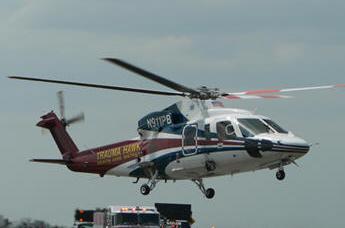|
|||||||||||||||||
|
|
|
|||
|
By |
||||
 |
February 24, 2011 - A research study performed by the University of Illinois College of Medicine at Peoria found that, out of 27,697 surveyed helicopter emergency medical service (HEMS) transports, only 377 (1.4%) were found to be medically inappropriate flights.
These findings contradict critics of HEMS, who have long
claimed that a large but until now unquantified number
of HEMS transports are medically unnecessary.
The study, titled, ?Medical Necessity of Helicopter Emergency Medical Services Transports: Results of a National Cohort Utilization Review,? reviewed all of the flights performed in 2009 by Air Evac EMS Inc. (Air Evac Lifeteam), a large national air medical company with bases in 14 states. |
|||
|
A critical
care registered nurse gauged the medical appropriateness of
flights based on criteria from the Medicare Benefit Policy
Manual, industry guidelines from the Commission on the
Accreditation of Medical Transport Systems (CAMTS), Air Medical
Physicians Association (AMPA) position papers, the Center for
Disease Control?s guidelines for field triage, and Medicare
reimbursement appeal decisions.
Records
indicating a possible inappropriate flight were further reviewed
by a senior quality assurance/quality improvement nurse or a
senior medical director. Additionally, the reviewers of Air Evac
Lifeteam?s flights used a higher level of scrutiny for flights
under 30 miles in distance. Utilizing this process, the
reviewers found that only 1.4% of the flights that year could be
deemed medically inappropriate.
The
authors of the study noted that on-scene flights were more
likely to be classified as medically unnecessary than transfer
flights and that the most common reason a flight was deemed
medically unnecessary was because it met the criteria for ground
rather than air transportation.
Though the
rate of medically inappropriate flights was found to be very
low, the researches stated that a lack of |
||||

